#calics? V
Explore tagged Tumblr posts
Text

I hope side parts are in again cuz my hair doesn’t want the middle part anymore lol
#smilessona#so far the past two times I’ve blow dried my hair it’s done the side part naturally sooooo#and I have a free will so I can do what I want with it heckbyeah#my hair is actually really weird cuz I have a lot of uuuuh#how do you spell them#calics? V#yeah I have those and so it makes my hair always really awkward#but yeah#tried to see if blow drying my hair with the diffuser thing or whatever would make it curly#it kinda worked but it also didn’t lol#I’m really curious on what curly hair care would do to my hair#idk if my hair is straight or not#it’s like an awkward mix 😔
51 notes
·
View notes
Text


V – Vicia faba L. – Fava (Fabaceae)
b, alla base del calice si notano i fori praticati dai Bombi per raggiungere il nettare evitando l'apertura dei fiori indispensabile per effettuare l'impollinazione
#photographers on tumblr#digital image processing#original photographs#flowers#pollination#Bombus#Fabaceae
110 notes
·
View notes
Photo
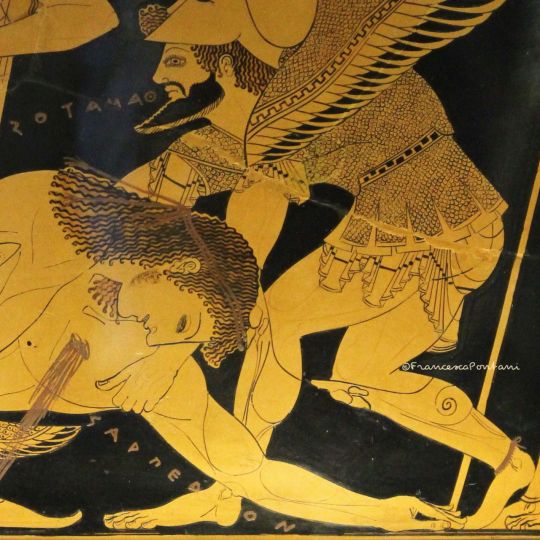
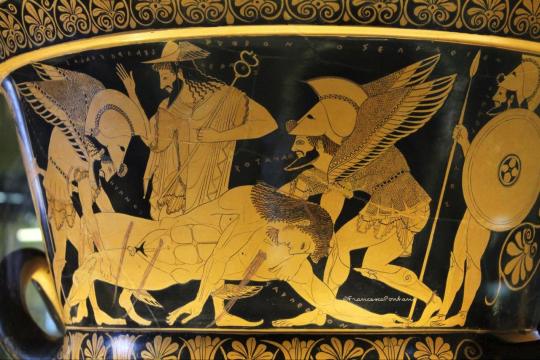
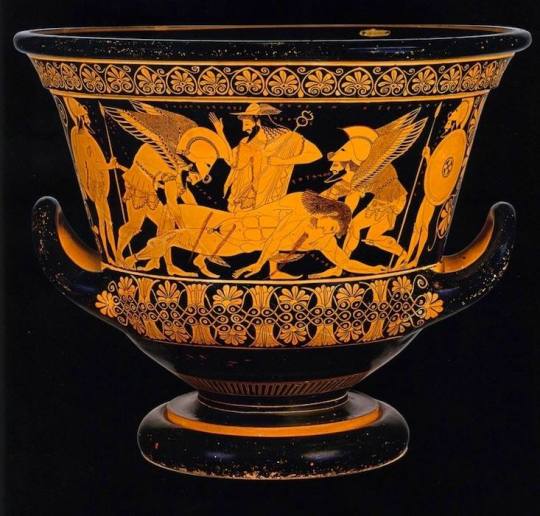


Da: SGUARDI SULL’ARTE LIBRO SECONDO - di Gianpiero Menniti
ANTICHE TECNICHE, ANTICHE SENSIBILITA'
La ceramica antica non è appassionante poichè appare ornamento di un oggetto che riveste ben altre utilità. Eppure possiede una notevole importanza per l'archeologia e la conoscenza del passato: la ceramica è il più delle volte "databile" e grazie a questa caratteristica diviene uno strumento "datante". Eccone un esempio. Sul cratere, datato al 515 a.C., conservato nel museo nazionale etrusco di Villa Giulia a Roma, Euphronios narra l’epilogo della vicenda terrena di Sarpedonte, re licio figlio di Zeus e di Laodamia, caduto durante la guerra di Troia come avversario del fronte acheo, il cui cadavere, riverso e possente, viene trasportato, al cospetto di due guerrieri situati alle due estremità della scena, da Thanatos (la morte) e Hypnos (il sonno, personificazione di un concetto di origine presocratica). Ermes, riconoscibile dal caduceo che porta in mano, assiste all'atto pietoso: la caratterizzazione dei personaggi è un’altra dote della ceramografia narrativa rivelata attraverso le “figure rosse”. Ma i limiti dell’espressività delle figure nere sono superati anche attraverso dettagli che acquisiscono consistenza materiale, imprimendo alle rappresentazioni la consistenza di “apparizioni”, luce in rilievo dal fondo acronico di un tempo mitico. Perché, a ben vedere, la coniugazione tra il nero del fondo e le figure che su di esso si stagliano, produce un effetto visivo di forte impatto, l'emergere dal “nulla” della vita che s'impone allo spettatore come espressione di un monito, di un messaggio filtrato attraverso la sintesi delle immagini, di un atto di comunicazione che diviene testo retorico e convenzionale dei valori ideali della polis. Il tema è originalissimo e quindi di raro uso. Ed è conciliatorio: il cratere porta impressa la rappresentazione dell’omaggio funebre che supera la consueta distinzione tra alleato e nemico per raccogliersi intorno alla condizione ineluttabile dell’abbandono dell’esistenza terrena di un combattente valoroso. Con il dio Ermes, invisibile - lo è, nell'espressione simbolica, grazie all’elmo che indossa - che solleva la mano ad indicare l’ascesa del guerriero verso la trascendenza. Il cratere a calice è attribuito ad Euphronios in qualità di ceramografo (agì tra il 520 ed il 500) e ad Euxitheos come vasaio. La produzione di ceramiche a figure rosse rappresenta il punto d’arrivo di un lungo ed intenso processo di raffigurazione narrativa sorto nel c.d. periodo protoattico dell’età orientalizzante allocabile nel VII sec. a.C. (700-625 a.C.) e giunto fino agli anni 530-525 a.C. ai quali si fa risalire convenzionalmente l’invenzione della nuova tecnica che prevede superfici vive risparmiate stagliate su un fondo trattato con vernice nera brillante. Su questi spazi la raffigurazione interamente pittorica scopre la luce delle immagini prima campite, al contrario, con vernice nera ed incisioni necessarie a fornire i dettagli anatomici dei corpi. La tecnica a figure nere, più antica e diffusa, risalente alle opere del pittore di Nesso, continuò a convivere a lungo con il nuovo “stile” a figure rosse (così definite poiché le superfici dell’argilla lasciate libere dalla campitura nera del fondo assumono, a seguito della cottura, un caratteristico colore rossastro) che s’impose definitivamente solo nel primo quarto del V sec. a.C.. Fino ad allora, si assiste a produzioni che rivelano la parallela persistenza (specie fuori dall’Attica) del vecchio modo e pensino la creazione di vasi “bilingui”.
- In copertina: Maria Casalanguida, "Bottiglie e cubetto", 1975, collezione privata
17 notes
·
View notes
Text
Done some time agó, but specs redone now.

Springtrap's Nissan Skylane GTR V-Spec R33:
Color: custom saten militar green/ custom side stripe (blood red, brown and silver)
Exterior: HRE 501 wheels (3p/all brown), Nismo 400r front and side bumpers, custom vented hood, rear bumper ripped off and changed for Springtrap's made rear bar kit (polished metal/blood red sprayed), East Bear Sports mirrors, wing blade and side caps painted in silver, custom titanium exhaust.
Interior: stripped out carpet, doors and side pannels and roof carpet, Recaro baket seats, 6 point racing harness, Sparco MOD 345 3R calice 65MM MSN steering wheel, 70% dark tinted windows.
Mecanics: rebuilt RB26DETT engine with 450hp, increased turbo boost, HKS intercooler, HKS air filter, Eibach suspensión, Brembo racing brakes (red calipier), Springtrap made custom vented brake discs.
I like the idea of this car with things done by Springtrap itself, as I see him like a person who likes and knows about technology and robotics, with just the thing of independence on his car maintenance, and doing easy modifications by itself like the brake discs and the rear bar kit.
From all of this car desings... I thought... I can do an au... Maybe... Maybe...
4 notes
·
View notes
Text

Psaume 16 v 5-11 L'Eternel est mon partage et mon calice; C'est toi qui m'assures mon lot; Un héritage délicieux m'est échu, Une belle possession m'est accordée. Je bénis l'Eternel, mon conseiller; La nuit même mon coeur m'exhorte. J'ai constamment l'Eternel sous mes yeux; Quand il est à ma droite, je ne chancelle pas. Aussi mon coeur est dans la joie, mon esprit dans l'allégresse, Et mon corps repose en sécurité. Car tu ne livreras pas mon âme au séjour des morts, Tu ne permettras pas que ton bien-aimé voie la corruption. Tu me feras connaître le sentier de la vie; Il y a d'abondantes joies devant ta face, Des délices éternelles à ta droite.
0 notes
Text
true pain is makin it thru the base game (minus last boss n dlc) w/o dying more than 4 times to a single boss but then dying 18 times to defiled watchdog 😔
BUT I DID IT n i'm lucky bc reviewing the footage i probably shoulda died 3 times in that attempt </3
#i rly can't remember the last time i died to Anything this much in a soulsborne game#probably the boss i died 2 the most right after midir & friede gjfjks#i still have 2 kill defiled amygdala before i can leave this hellhole too :') pray fr me#i stg after i'm done w these calice dungeons i'm never goin in them again#or at least for a v long time#bc the bosses (minus the reused ones) in em are neat !! but the areas themselves r a slog 2 go thru#i just want that sweet plat 🤲#nep's game talk#bloodborne
8 notes
·
View notes
Text
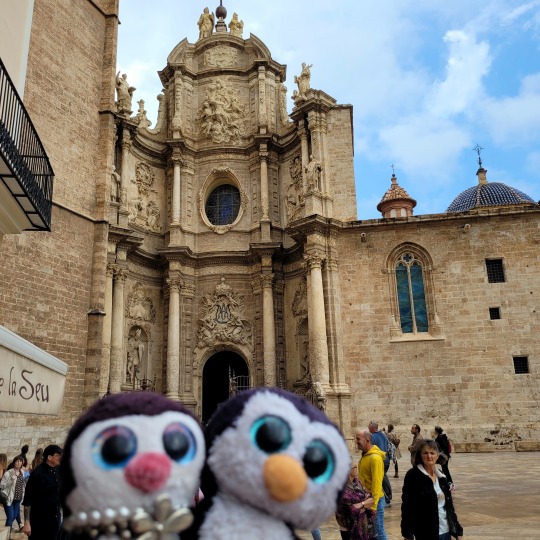
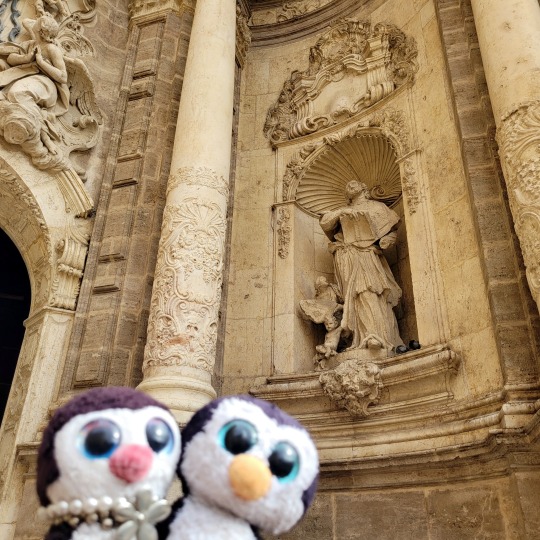
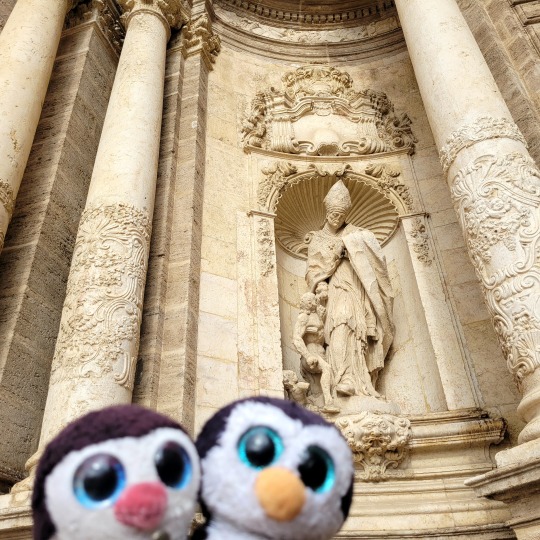
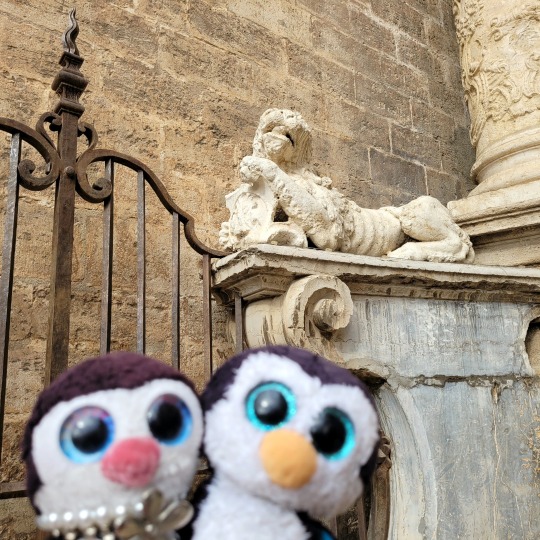
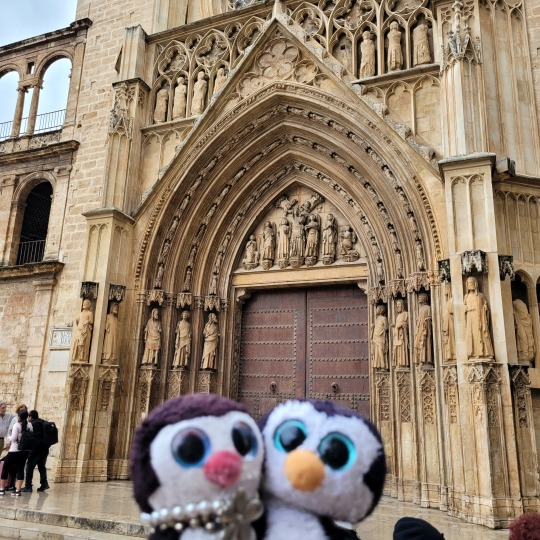
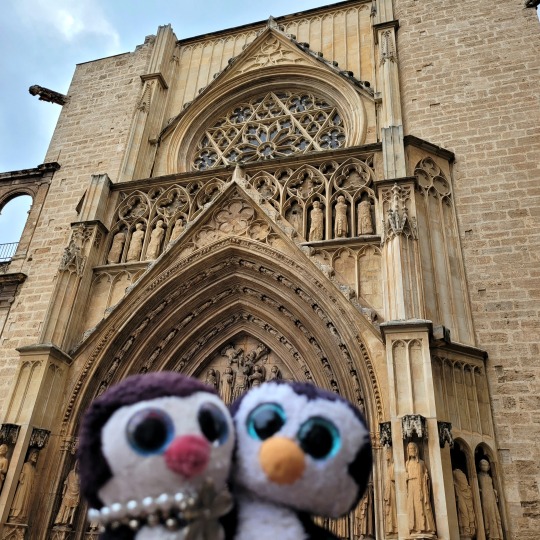
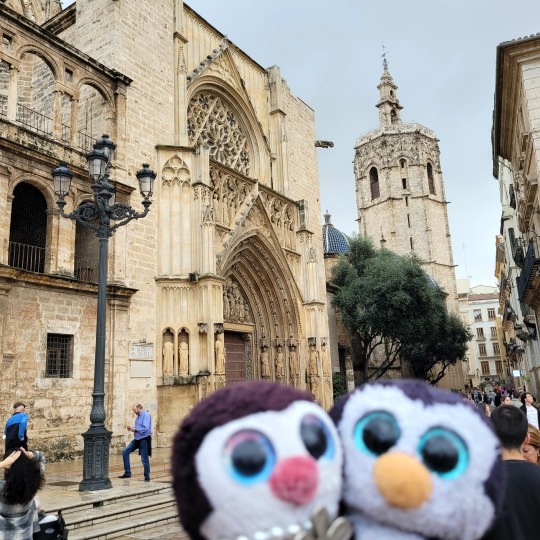
2022/11/12 Esta es la catedral de la ciudad, la iglesia más grande e importante de la ciudad. Se inauguró hace muchos años y en su inicio fue construida en estilo gótico. El gran libertador español la dedicó a la asunción de la Vírgen María. Tiene varias puertas monumentales y elementos escultóricos. Dentro de ella se custodia lo que se cree que es el auténtico cáliz de Cristo.
This is the city's cathedral, the largest and most important church in the city. It was inaugurated many years ago and was originally built in the Gothic style. The great Spanish liberator dedicated it to the assumption of the Virgin Mary. It has several monumental gates and sculptural elements. Inside it is kept what is believed to be the authentic chalice of Christ.
Google translation into Italian: Questa è la cattedrale della città, la chiesa più grande e importante della città. È stato inaugurato molti anni fa ed è stato originariamente costruito in stile gotico. Il grande liberatore spagnolo lo dedicò all'assunzione della Vergine Maria. Ha diverse porte monumentali ed elementi scultorei. Al suo interno è custodito quello che si ritiene essere l'autentico calice di Cristo.
Google Translation into Portuguese: Esta é a catedral da cidade, a maior e mais importante igreja da cidade. Foi inaugurado há muitos anos e foi originalmente construído em estilo gótico. O grande libertador espanhol dedicou-o à assunção da Virgem Maria. Tem vários portões monumentais e elementos escultóricos. No seu interior está guardado o que se acredita ser o autêntico cálice de Cristo.
Google Translation into French: C'est la cathédrale de la ville, la plus grande et la plus importante église de la ville. Il a été inauguré il y a de nombreuses années et a été construit à l'origine dans le style gothique. Le grand libérateur espagnol l'a dédié à l'assomption de la Vierge Marie. Il a plusieurs portes monumentales et éléments sculpturaux. A l'intérieur se trouve ce que l'on croit être l'authentique calice du Christ.
Google Translation into Arabic: إنها كاتدرائية المدينة ، أكبر وأهم كنيسة في المدينة. تم افتتاحه منذ سنوات عديدة وبُني في الأصل على الطراز القوطي. كرّسها المحرر الإسباني العظيم لانتقال العذراء مريم. لها العديد من البوابات الضخمة والعناصر النحتية. يوجد في الداخل ما يُعتقد أنه كأس المسيح الأصيل.
Google Translation into German: Es ist die Kathedrale der Stadt, die größte und wichtigste Kirche der Stadt. Sie wurde vor vielen Jahren eingeweiht und war ursprünglich im gotischen Stil erbaut. Der große spanische Befreier widmete es der Himmelfahrt der Jungfrau Maria. Es hat mehrere monumentale Tore und skulpturale Elemente. Im Inneren befindet sich, wie man glaubt, der authentische Kelch Christi.
Google Translation into Albanisch: Është katedralja e qytetit, kisha më e madhe dhe më e rëndësishme në qytet. Është inauguruar shumë vite më parë dhe fillimisht është ndërtuar në stilin gotik. Çlirimtari i madh spanjoll ia kushtoi Fjetjes së Virgjëreshës Mari. Ka disa porta monumentale dhe elemente skulpturore. Brenda besohet të jetë kupa autentike e Krishtit.
Google Translation into Armenian: Դա քաղաքի տաճարն է, քաղաքի ամենամեծ և ամենակարևոր եկեղեցին։ Այն բացվել է շատ տարիներ առաջ և ի սկզբանե կառուցվել է գոթական ոճով: Իսպանացի մեծ ազատարարն այն նվիրել է Մարիամ Աստվածածնի Վերափոխմանը։ Այն ունի մի քանի մոնումենտալ դարպասներ և քանդակագործական տարրեր։ Ենթադրվում է, որ ներսում Քրիստոսի իսկական բաժակն է:
Google Translation into Bulgarian: Това е катедралата на града, най-голямата и важна църква в града. Открита е преди много години и първоначално е построена в готически стил. Великият испански освободител го посвещава на Успение Богородично. Има няколко монументални порти и скулптурни елементи. Смята се, че вътре е автентичният потир на Христос.
Google Translation into Czech: Je to městská katedrála, největší a nejvýznamnější kostel ve městě. Byl slavnostně otevřen před mnoha lety a původně byl postaven v gotickém stylu. Velký španělský osvoboditel ji zasvětil Nanebevzetí Panny Marie. Má několik monumentálních bran a sochařských prvků. Věří se, že uvnitř je autentický Kristův kalich.
Google Translation into Slovak: Je to mestská katedrála, najväčší a najvýznamnejší kostol v meste. Bol slávnostne otvorený pred mnohými rokmi a pôvodne bol postavený v gotickom štýle. Veľký španielsky osloboditeľ ho zasvätil Nanebovzatiu Panny Márie. Má niekoľko monumentálnych brán a sochárskych prvkov. Verí sa, že vo vnútri je autentický Kristov kalich.
Google Translation into Slovenian: Je mestna katedrala, največja in najpomembnejša cerkev v mestu. Slovesno so jo odprli pred mnogimi leti in je bila prvotno zgrajena v gotskem slogu. Veliki španski osvoboditelj jo je posvetil Marijinemu vnebovzetju. Ima več monumentalnih vrat in kiparskih elementov. V notranjosti naj bi bil pristen Kristusov kelih.
Google Translation into Suomi: Se on kaupungin katedraali, kaupungin suurin ja tärkein kirkko. Se vihittiin käyttöön monta vuotta sitten ja se rakennettiin alun perin goottilaiseen tyyliin. Suuri espanjalainen vapauttaja omisti sen Neitsyt Marian taivaaseenastumisen kunniaksi. Siinä on useita monumentaalisia portteja ja veistoselementtejä. Sisällä uskotaan olevan aito Kristuksen malja.
Google Translation into Greek: Είναι ο καθεδρικός ναός της πόλης, ο μεγαλύτερος και σημαντικότερος ναός της πόλης. Εγκαινιάστηκε πριν από πολλά χρόνια και χτίστηκε αρχικά σε γοτθικό ρυθμό. Ο μεγάλος Ισπανός ελευθερωτής το αφιέρωσε στην Κοίμηση της Θεοτόκου. Έχει αρκετές μνημειακές πύλες και γλυπτικά στοιχεία. Στο εσωτερικό πιστεύεται ότι βρίσκεται το αυθεντικό δισκοπότηρο του Χριστού.
Google Translation into Dutch: Het is de kathedraal van de stad, de grootste en belangrijkste kerk in de stad. Het werd vele jaren geleden ingehuldigd en was oorspronkelijk gebouwd in gotische stijl. De grote Spaanse bevrijder wijdde het aan de Tenhemelopneming van de Maagd Maria. Het heeft verschillende monumentale poorten en sculpturale elementen. Binnenin wordt aangenomen dat het de authentieke kelk van Christus is.
Google Translation into Norwegian: Det er byens katedral, den største og viktigste kirken i byen. Den ble innviet for mange år siden og ble opprinnelig bygget i gotisk stil. Den store spanske befrieren dedikerte den til Jomfru Marias himmelfart. Den har flere monumentale porter og skulpturelle elementer. Innsiden antas å være Kristi autentiske kalk.
Google Translation into Polish: Jest katedrą miejską, największym i najważniejszym kościołem w mieście. Został zainaugurowany wiele lat temu i pierwotnie został zbudowany w stylu gotyckim. Wielki hiszpański wyzwoliciel poświęcił go Wniebowzięciu Najświętszej Marii Panny. Posiada kilka monumentalnych bram i elementów rzeźbiarskich. Uważa się, że wewnątrz znajduje się autentyczny kielich Chrystusa.
Google Translation into Romanian: Este catedrala orașului, cea mai mare și mai importantă biserică din oraș. A fost inaugurat cu mulți ani în urmă și a fost construit inițial în stil gotic. Marele eliberator spaniol a dedicat-o Adormirii Maicii Domnului. Are mai multe porți monumentale și elemente sculpturale. În interior se crede că este potirul autentic al lui Hristos.
Google Translation into Russian: Это городской собор, самая большая и самая важная церковь в городе. Он был открыт много лет назад и изначально был построен в готическом стиле. Великий испанский освободитель посвятил его Успению Пресвятой Богородицы. Он имеет несколько монументальных ворот и скульптурных элементов. Считается, что внутри находится подлинная чаша Христа.
Google Translation into Swedish: Det är stadens katedral, den största och viktigaste kyrkan i staden. Den invigdes för många år sedan och byggdes ursprungligen i gotisk stil. Den store spanska befriaren ägnade det åt Jungfru Marias antagande. Den har flera monumentala portar och skulpturala element. Inuti tros det vara Kristi autentiska kalk.
Google Translation into Turkish: Şehrin katedrali, şehrin en büyük ve en önemli kilisesidir. Yıllar önce açıldı ve aslen Gotik tarzda inşa edildi. Büyük İspanyol kurtarıcı, onu Meryem Ana'nın Göğe Kabulü'ne adadı. Birkaç anıtsal kapısı ve heykelsi unsurları vardır. İçeride İsa'nın otantik kadehi olduğuna inanılıyor.
Google Translation into Bengali: এটি শহরের ক্যাথেড্রাল, শহরের বৃহত্তম এবং সবচেয়ে গুরুত্বপূর্ণ গির্জা। এটি বহু বছর আগে উদ্বোধন করা হয়েছিল এবং মূলত গথিক শৈলীতে নির্মিত হয়েছিল। মহান স্প্যানিশ মুক্তিদাতা এটিকে উৎসর্গ করেছিলেন ভার্জিন মেরির অনুমানে। এটিতে বেশ কয়েকটি স্মারক গেট এবং ভাস্কর্য উপাদান রয়েছে। ভিতরে খ্রীষ্টের খাঁটি চালিস বলে বিশ্বাস করা হয়।
Google Translation into Chinese: 它是该市的大教堂,是该市最大、最重要的教堂。 它在多年前落成,最初以哥特式风格建造。 伟大的西班牙解放者将其献给圣母升天。 它有几个巨大的大门和雕塑元素。 内部被认为是真正的基督圣杯。
Google Translation into Korean: 그것은 도시에서 가장 크고 가장 중요한 교회 인 도시�� 대성당입니다. 그것은 수년 전에 취임했으며 원래 고딕 양식으로 지어졌습니다. 위대한 스페인 해방자는 그것을 성모 마리아의 가정에 바쳤습니다. 여러 개의 기념비적인 문과 조각 요소가 있습니다. 내부는 그리스도의 진정한 성배로 여겨집니다.
Google Translation into Hebrew: זוהי הקתדרלה של העיר, הכנסייה הגדולה והחשובה בעיר. הוא נחנך לפני שנים רבות ונבנה במקור בסגנון גותי. המשחרר הספרדי הגדול הקדיש אותו להעלאת מרים הבתולה. יש בו מספר שערים מונומנטליים ואלמנטים פיסוליים. בפנים מאמינים כי הוא הגביע האותנטי של ישו.
Google Translation into Hindi: यह शहर का गिरजाघर है, जो शहर का सबसे बड़ा और सबसे महत्वपूर्ण चर्च है। इसका उद्घाटन कई साल पहले हुआ था और मूल रूप से गोथिक शैली में बनाया गया था। महान स्पेनिश मुक्तिदाता ने इसे वर्जिन मैरी की धारणा को समर्पित किया। इसमें कई स्मारक द्वार और मूर्तिकला तत्व हैं। माना जाता है कि अंदर ईसा मसीह का प्रामाणिक प्याला है।
Google Translation into Indonesian: Itu adalah katedral kota, gereja terbesar dan terpenting di kota. Itu diresmikan bertahun-tahun yang lalu dan awalnya dibangun dengan gaya Gotik. Pembebas Spanyol yang hebat mendedikasikannya untuk Pengangkatan Perawan Maria. Ini memiliki beberapa gerbang monumental dan elemen pahatan. Di dalamnya diyakini sebagai piala asli Kristus.
Google Translation into Japanese: 市の大聖堂であり、市で最大かつ最も重要な教会です。 何年も前に発足し、もともとゴシック様式で建てられました。 スペインの偉大な解放者は、それを聖母マリアの被昇天に捧げました。 いくつかの記念碑的な門と彫刻の要素があります。 内部は本物のキリストの聖杯であると信じられています。
Google Translation into Malay: Ia adalah katedral bandar, gereja terbesar dan paling penting di bandar. Ia telah dirasmikan bertahun-tahun yang lalu dan pada asalnya dibina dalam gaya Gothic. Pembebas Sepanyol yang hebat mendedikasikannya untuk Assumption of the Virgin Mary. Ia mempunyai beberapa pintu gerbang monumental dan elemen arca. Di dalamnya dipercayai sebagai piala Kristus yang asli.
Google Translation into Pashtun: دا د ښار کلیسا ده، په ښار کې ترټولو لویه او مهمه کلیسا ده. دا څو کاله وړاندې پرانستل شو او په اصل کې په ګوتیک سټایل کې جوړ شوی و. د هسپانوي لوی آزاد کونکي دا د ورجن مریم انګیرنې ته وقف کړ. دا څو یادگار دروازې او مجسمې عناصر لري. دننه داسې انګیرل کیږي چې د مسیح مستند چالیس وي.
Google Translation into Persian: این کلیسای جامع شهر، بزرگترین و مهم ترین کلیسای شهر است. سال ها پیش افتتاح شد و در ابتدا به سبک گوتیک ساخته شد. آزادی بخش بزرگ اسپانیایی آن را به عروج مریم مقدس تقدیم کرد. دارای چندین دروازه و عناصر مجسمهسازی است. اعتقاد بر این است که داخل آن جام معتبر مسیح است.
Google Translation into Tagalog: Ito ang katedral ng lungsod, ang pinakamalaki at pinakamahalagang simbahan sa lungsod. Ito ay pinasinayaan maraming taon na ang nakalilipas at orihinal na itinayo sa istilong Gothic. Inialay ito ng dakilang tagapagpalaya ng Espanyol sa Assumption of the Virgin Mary. Mayroon itong ilang mga monumental na gate at sculptural elements. Sa loob ay pinaniniwalaan na ang tunay na kalis ni Kristo.
Google Translation into Thai: เป็นโบสถ์ประจำเมือง เป็นโบสถ์ที่ใหญ่และสำคัญที่สุดในเมือง เปิดตัวเมื่อหลายปีก่อนและเดิมสร้างขึ้นในสไตล์โกธิค ผู้ปลดปล่อยชาวสเปนผู้ยิ่งใหญ่อุทิศให้กับการสันนิษฐานของพระแม่มารี มีประตูขนาดใหญ่และองค์ประกอบทางประติมากรรมมากมาย เชื่อว่าภายในเป็นถ้วยที่แท้จริงของพระคริสต์
Google Translation into Urdu: یہ شہر کا کیتھیڈرل ہے، جو شہر کا سب سے بڑا اور اہم ترین گرجا گھر ہے۔ اس کا افتتاح کئی سال پہلے ہوا تھا اور اصل میں گوتھک انداز میں بنایا گیا تھا۔ عظیم ہسپانوی آزادی دہندہ نے اسے کنواری مریم کے مفروضے کے لیے وقف کیا۔ اس میں کئی یادگار دروازے اور مجسمہ سازی کے عناصر ہیں۔ اندر مسیح کا مستند پیالہ سمجھا جاتا ہے۔
Google Translation into Ukrainian: Це міський собор, найбільший і найважливіший храм міста. Він був урочисто відкритий багато років тому і спочатку був побудований в готичному стилі. Великий іспанський визволитель присвятив його Успінню Діви Марії. Має кілька монументальних воріт і скульптурних елементів. Всередині, як вважають, справжня чаша Христа.
#Valencia#España#Spain#Downtown#Cathedral#Church#Gothic#Architecture#Sculpture#Authentic#Christ#Calice#PolloNegroSkyWalker#Travel#Beauty#CoupleGoals#GoodVibes#Plushies#Maharashtra#ペンギン
2 notes
·
View notes
Photo


Médaille religieuse
Avers: * EIVS.IN.OBITV.NRO.PRAE. / .SENTIA.MVNIAMVR *.
Saint debout de face tenant la Bible et un crucifix.
A sa gauche: CRVX / S.PA / TRIS. Un calice d'où sort un serpent.
A sa droite: BEN / EDIC / TI. Un aigle.
A l'exergue: EX.S.M.CASINO / MDCCCLXXX.
Revers: S..M..Q..L..I..V..B / PAX / V..R..S..N..S..M..V.
Croix central avec C en1, S en 2, P en 3, B en4.
Sur la croix: ND / MD // CSSML.
Tranche lisse.
XIXème Siècle
3 notes
·
View notes
Text
Map of the Soul: Journey to Myself
4 December 2019
All moments at MAMA
Episode
Just notes and the videos of past performances that were used.
I. FUTURE MEETS PAST : CALLING
You can catch a shot of an eye in the first VCR, looking similar to Jimin’s eye shot from “Serendipity”

During “N.O” and “We Are Bulletproof Pt.2″, similar hands to the ones from “N.O” MV can be seen on the screens in the background.

II. PAST MEETS PRESENT : WORLD
Videos that appeared:
130517 방탄로그 (Bangtan log)
Vocal practice by 정국 of 방탄소년단
흔한 연습생의 크리스마스 Video Edit by 방탄소년단
방탄소년들의 졸업
Dance practice by 지민 of 방탄소년단 - Bait
[EPISODE] BTS (방탄소년단) Debut day 130613 (1:48)
“No More Dream” MV
방탄소년단_No More Dream (No More Dream by Bangtan Boys@Mcountdown 2013.6.13)
The Wings Tour The Final
방탄소년단_N.O (N.O by BTS@Mcountdown 2013.9.12)
“Boy In Luv” at M Countdown
Mnet [엠카운트다운] Ep.390 : 방탄소년단(BTS) - Danger @MCOUNTDOWN_140821
First Release! BTS ‘I NEED U’ Powerful Charisma! [M COUNTDOWN] EP.422
“I NEED U” MV
1st win at M Countdown (Bangtan Bomb)
The Wings Tour?
“Blood, Sweat & Tears” MV
BTS DNA Comeback Show
2016 and 2017 daesang wins at MAMA
방탄소년단_BTS Concept Trailer (BTS Concept Trailer by BTS@Mcountdown 2013.9.12)
[BTS - FIRE] Comeback Stage l M COUNTDOWN 160512 EP.473
413?
Love Yourself Tour
방탄소년단 - FAKE LOVE (BTS - FAKE LOVE) │BTS COMEBACK SHOW 180524 180524
ly tour
Articles
BTS Takes Home 3 Awards At 2019 American Music Awards
BTS: K-pop idols make first historic Grammy appearance
K-POP BOY GROUP BTS MAKES HISTORY AT THE 2019 BILLBOARD MUSIC AWARDS
BTS breaks The Beatles record on Billboard 200 - 3 Billboard No.1's within a year (while it’s a fact Bangtan topped the Billboard 200 thrice and there are articles about it, I can’t seem to find an article with this exact headline)
Fear of the unknown future We doubted ourselves all the time We tried to overcome the fear we encountered Dreams are our realities from now on We are no longer sad nor pain
“Boy With Luv”
“Mikrokosmos”
III. FUTURE MEETS PAST : ETERNAL JOURNEY
All our time
우리의 모든 시간은 과거, 현제, 이래는 결국 우리 안에 존재한다 우리가 걸어온 7년의 시간 함께 해 온 7명의 BTS 멤버들 안에 존재한다
Each boy is associated with an object:
Jungkook: camera
possibly a reference to the G.C.F.
Jin: binocular
possibly a reference to “Blood, Sweat & Tears” JP ver.
RM: vintage mic
possibly a reference to “Boy With Luv” or to “Airplane Pt.2″ (see the notes of this post)
J-Hope: frame
possibly a reference to the painting of Frau Eva in the Short Films (see the notes of this post)
V: violin
there are violins in “N.O” MV (see the notes of this post)
Jimin: Polaroid
possibly a reference to his hobby of taking polaroids
Suga: hourglass
Giant elements were projected in the stadium: bear, dolphin, lion, calice, ram, bull, tiger
And a giant snake was on the stage.
9 notes
·
View notes
Text
Regards croisés sur “la bacchante” d’André Lhote avec JJ Issouli et Isabelle Beccia.
Article relatif à la sortie culturelle sur Bordeaux le 19 février 2020.
Intervention passionnée et passionnante de Jean-Jacques Issouli professeur agrégé de lettres classiques sur “la bacchante” d’André Lhote avec Isabelle Beccia. Œuvres citées en rapport avec le thème, certaines m’ont échappées.
• Euripide Bacchantes : http://remacle.org/bloodwolf/tragediens/euripide/bacchantesfr.htm
• Ovide Métamorphose 11ieme : http://www.theatre-classique.fr/pages/pdf/OVIDE_METAMORPHOSES_11.pdf (…) Non loin de là, des boeufs paisibles, courbés sous le joug, traçaient dans les champs de larges sillons. D’agrestes laboureurs, d’un bras nerveux, avec la bêche ouvraient la terre, et préparaient les doux fruits de leurs pénibles sueurs. À l’aspect des Ménades, ils ont fui, épouvantés, abandonnant, épars dans les champs, leurs bêches, leurs longs râteaux, et leurs hoyaux pesants : chacune s’en empare. Dans leur fureur, elles arrachent aux boeufs même leurs cornes menaçantes, et reviennent de l’interprète des dieux achever les destins. Il leur tendait des mains désarmées. Ses prières les irritent. Pour la première fois, les sons de sa voix ont perdu leur pouvoir. Ces femmes sacrilèges consomment leur crime ; il expire, et son âme, grands dieux ! s’exhale à travers cette bouche dont les accents étaient entendus par les rochers, et qui apprivoisait les hôtes sauvages des forêts.
• Robert Garnier Hyppolite : https://www.persee.fr/docAsPDF/albin_1154-5852_2008_num_20_1_1109.pdf PHEDRE : Derechef, ô cruel, à vos pieds je me jette, Prenez compassion de moy vostre sujette.
HIPPOLYTE : Retirez-vous de moy, ne me venez toucher, Ne me toucher le corps, de peur de me tacher. Comment ? elle m’embrasse ? Il faut que mon espee, Vengeant si grand forfaict, soit de son sang trempée. Jamais, chaste Diane, à ton nom immortel Un sang mieux consacré n’humecta ton autel.
PHEDRE : C’est ce que je demande. A ceste heure, Hippolyte, Piteux, mettrez-vous fin à ma douleur despite. Hippolyte, il ne peut m’arriver plus grand heur Que mourant par vos mains conserver mon honneur.
HIPPOLYTE : Allez, vivez infame, et que jamais cette arme, Pollue en vous touchant, le chaste corps ne m’arme. En quel Tigre, en quel Gange, en quel gouffre aboyant, En quelle ondeuse mer m’iray-je nettoyant ? (v. 1473-1488)
• Tableau Bacchante avec une chèvre William Bouguereau. 1825-1905. Paris. Une Bacchante ou Bacchante lutinant une chèvre 1862.
• J. Maria de Heredia trophée : https://www.lacauselitteraire.fr/les-trophees-poesies-completes-jose-maria-de-heredia
Les bacchanales : Une brusque clameur épouvante le Gange. Les tigres ont rompu leurs jougs et, miaulants, Ils bondissent, et sous leurs bonds et leurs élans Les Bacchantes en fuite écrasent la vendange.
Et le pampre que l’ongle ou la morsure effrange Rougit d’un noir raisin les gorges et les flancs Où près des reins rayés luisent des ventres blancs De léopards roulés dans la pourpre et la fange.
Sur les corps convulsifs les fauves éblouis, Avec des grondements que prolonge un long râle, Flairent un sang plus rouge à travers l’or du hâle ;
Mais le Dieu, s’enivrant à ces jeux inouïs, Par le thyrse et les cris les exaspère et mêle Au mâle rugissant la hurlante femelle.
• Baudelaire POÈME LE THYRSE À FRANTZ LISZT
Qu’est-ce qu’un thyrse ? Selon le sens moral et poétique, c’est un emblème sacerdotal dans la main des prêtres ou des prêtresses célébrant la divinité dont ils sont les interprètes et les serviteurs. Mais physiquement ce n’est qu’un bâton, un pur bâton, perche à houblon, tuteur de vigne, sec, dur et droit. Autour de ce bâton, dans des méandres capricieux, se jouent et folâtrent des tiges et des fleurs, celles-ci sinueuses et fuyardes, celles-là penchées comme des cloches ou des coupes renversées. Et une gloire étonnante jaillit de cette complexité de lignes et de couleurs, tendres ou éclatantes. Ne dirait-on pas que la ligne courbe et la spirale font leur cour à la ligne droite et dansent autour dans une muette adoration ? Ne dirait-on pas que toutes ces corolles délicates, tous ces calices, explosions de senteurs et de couleurs, exécutent un mystique fandango autour du bâton hiératique ? Et quel est, cependant, le mortel imprudent qui osera décider si les fleurs et les pampres ont été faits pour le bâton, ou si le bâton n’est que le prétexte pour montrer la beauté des pampres et des fleurs ? Le thyrse est la représentation de votre étonnante dualité, maître puissant et vénéré, cher Bacchant de la Beauté mystérieuse et passionnée. Jamais nymphe exaspérée par l’invincible Bacchus ne secoua son thyrse sur les têtes de ses compagnes affolées avec autant d’énergie et de caprice que vous agitez votre génie sur les cœurs de vos frères. — Le bâton, c’est votre volonté, droite, ferme et inébranlable ; les fleurs, c’est la promenade de votre fantaisie autour de votre volonté ; c’est l’élément féminin exécutant autour du mâle ses prestigieuses pirouettes. Ligne droite et ligne arabesque, intention et expression, roideur de la volonté, sinuosité du verbe, unité du but, variété des moyens, amalgame tout-puissant et indivisible du génie, quel analyste aura le détestable courage de vous diviser et de vous séparer ?
Cher Liszt, à travers les brumes, par delà les fleuves, par-dessus les villes où les pianos chantent votre gloire, où l’imprimerie traduit votre sagesse, en quelque lieu que vous soyez, dans les splendeurs de la ville éternelle ou dans les brumes des pays rêveurs que console Cambrinus, improvisant des chants de délectation ou d’ineffable douleur, ou confiant au papier vos méditations abstruses, chantre de la Volupté et de l’Angoisse éternelles, philosophe, poëte et artiste, je vous salue en l’immortalité !
• Maupassant “Une partie de campagne ”
https://short-edition.com/fr/classique/guy-de-maupassant/une-partie-de-campagne
Extrait : La jeune fille pleurait toujours, pénétrée de sensations très douces, la peau chaude et piquée partout de chatouillements inconnus. La tête de Henri était sur son épaule ; et, brusquement, il la baisa sur les lèvres. Elle eut une révolte furieuse et, pour l’éviter, se rejeta sur le dos. Mais il s’abattit sur elle, la couvrant de tout son corps. Il poursuivit longtemps cette bouche qui le fuyait, puis, la joignant, y attacha la sienne. Alors, affolée par un désir formidable, elle lui rendit son baiser en l’étreignant sur sa poitrine, et toute sa résistance tomba comme écrasée par un poids trop lourd. Tout était calme aux environs.
L’oiseau se mit à chanter. Il jeta d’abord trois notes pénétrantes qui semblaient un appel d’amour, puis, après un silence d’un moment, il commença d’une voix affaiblie des modulations très lentes. Une brise molle glissa, soulevant un murmure de feuilles, et dans la profondeur des branches passaient deux soupirs ardents qui se mêlaient au chant du rossignol et au souffle léger du bois.
Une ivresse envahissait l’oiseau, et sa voix s’accélérant peu à peu comme un incendie qui s’allume ou une passion qui grandit, semblait accompagner sous l’arbre un crépitement de baisers. Puis le délire de son gosier se déchaînait éperdument. Il avait des pâmoisons prolongées sur un trait, de grands spasmes mélodieux.
Quelquefois il se reposait un peu, filant seulement deux ou trois sons légers qu’il terminait soudain par une note suraiguë. Ou bien il partait d’une course affolée, avec des jaillissements de gammes, des frémissements, des saccades, comme un chant d’amour furieux, suivi par des cris de triomphe.
Mais il se tut, écoutant sous lui un gémissement tellement profond qu’on l’eût pris pour l’adieu d’une âme. Le bruit s’en prolongea quelque temps et s’acheva dans un sanglot.
Christian Loverde http://bit.ly/CLoverde
Processed with MOLDIV
Processed with MOLDIV
Processed with MOLDIV
Processed with MOLDIV
La Bacchante d’André Lhote Regards croisés sur "la bacchante" d'André Lhote avec JJ Issouli et Isabelle Beccia. Article relatif à la sortie culturelle sur Bordeaux le 19 février 2020.
#André Lhotte#bacchante#Beaudelaire#Euripide#José Maria de Heredia#Maupassant#Ovide#Robert Garnier#William Bouguereau
2 notes
·
View notes
Text
JE T’AIME !, MARGUERITE BURNAT-PROVINS, Le Livre pour Toi
I Personne ne m’a appris ce mot. Je l’ai senti venir des profondeurs de ma chair, monter de mon sang à mes lèvres et s’envoler vers ta jeunesse et la force féconde qui est en toi.
Je l’ai entendu sortir de ta bouche avec ivresse. C’est un oiseau doré quis’est posé sur mes yeux, si doucement d’abord, et puis si lourdement quetout mon être en a chancelé.
Et je me suis abattue dans tes bras, tes grands bras où je me sensfragile et protégée.
La parole qui promet et qui livre, la parole sacrée jailli e de notre vieardente, planait sur nos têtes dans un clair rayon. Sylvius ! te souviens-tu ?
Alors j’ai vu passer l’Heure, l’Heure unique qui nous souriait et levait dans ses mains un caillou blanc.
Sur sa tunique, une à une, lentement les roses de son fronts’effeuillaient.
J’ai vu cela à travers mes paupières fermées, la joue appuyée contre ton cœur qui marque des secondes éblouissantes, comme un balancier de rubis. II J’ai regardé ton corps debout, simple et altier comme un pilier d’ivoire, ambré comme un rayon de miel. Je l’ai regardé, les mains croisées sur mes genoux, sans l’effleurer, dans la contemplation fervente de sa splendeur, et je l’ai aimé avec mon âme plus passionnément. Je me sens presque craintive, dominée par ce rythme qui chante à mes sens une mystérieuse musique ; je m’exalte silencieusement devant ce poème de grâce virile, d’élégance hautaine, de victorieuse jeunesse. O Sylvius, dis-moi que tu me donnes toute ta beauté. Dis-moi qu’elle est mienne, ta tête rayonnante imprégnée de soleil, dis-moi que tu m’abandonnes ta poitrine large où je m’étends pour sommeiller, tes hanches étroites et dures, tes genoux de marbre, tes bras qui pourraient m’écraser et tes mains si chères, où mon baiser lent se dépose au creux des paumes caressantes. J’ai regardé tes lèvres fières qui plient sous les miennes, tes dents où mes dents se sont heurtées illuminent ton sourire, ta langue chaude m’endort, et quand je m’éveille de mon vertige, c’est pour revoir ton corps triomphant, altier comme un pilier d’ivoire, ambré connue un rayon de miel. III Cette nuit tu as pris ma tête entre tes doigts impérieux et tu disais, les dents serrées : Ne bouge pas. Et je me suis abandonnée, le front cerclé par la couronne ardente qui se rétrécissait. Pourquoi n’as-tu pas enfoncé les ongles plus avant? Je n’aurais pas bougé et la douleur, venue de toi, serait entrée délicieusement dans ma chair. Ton désir jeune et délirant peut romore mes muscles, courber mes os, me faire râler d’angoisse, je suis ta chose, Sylvius, ne laisse rien de moi, puisque ma volonté s’en est allée à la dérive, dans l’eau attirante de tes yeux. Et cette nuit, passive et nue, n’étais-je pas une reine sous la couronne vivante de tes doigts refermés. IV Pendant cette minute inoubliable où nous nous sommes aimés plus loin que la terre, plus haut que le ciel, dans un monde resplendissant j’ai connu toutes les amours. Un feu surnaturel les a fondues dans mon cœur, comme en un creuset dévorant. J’ai été la mère, la sœur, l’amante; j’ai été ta chair, ton sang, ta pensée, ton âme emportée vers l’au delà, vaste et illuminé. Ton front s’appuyait au mien ; qu’est-il venu de ta vie vers ma vie dans cet éclair de radieuse pureté? Dis-moi Sylvius, quel dieu puissant nous a prêté alors un moment de sa divinité. V Que mon âme murmure autour de ton âme comme une abeille autour d’un calice parfumé. Que mon amour coule dans ton cœur, comme à travers les menthes bleues, la source innocente qui vit au soleil. Que ma pensée soit une colombe blanche posée sur ta pensée. Et que ta vie se referme sur ma vie, comme le cristal sur la goutte d’eau prisonnière qu’il garde depuis de milliers d’années. VI Tu ne me diras pas : Non. Souviens-toi que j’ai baisé tes lèvres, afin qu’il ne leur échappe que des paroles de douceur. Tu ne laisseras pas monter la colère dans tes yeux. Souviens-toi que j’ai baisé tes paupières, pour que ton regard soit une caresse sur le mien. Tu ne lèveras pas le doigt qui me menace. Souviens-toi que j’ai baisé tes mains, afin qu’elles ne retiennent que des gestes de tendresse. Tu ne t’éloigneras pas de moi. Souviens-toi que j’ai baisé tes pieds, pour qu’ils reviennent fidèles vers ma maison. Tu fermeras ton cœur à l’amour d’autres femmes. Souviens-toi que j’ai baisé ton cœur à travers ta poitrine, afin qu’il soit à moi par delà le tombeau. VII Je ne te dirai plus combien je t’aime, Sylvius, je ne sais plus. Je poserai ma joue sur l’écorce du chêne, l’arbre de force et de fierté, je lui dirai : que ta feuille s’envole pour lui porter l’orgueil de mon amour. J’irai vers le bouleau délicat qui palpite, l’arbre rêveur comme un rayon de lune, je lui dirai : Que ta feuille s’envole jusqu’à celui qui a tout mon amour, pour lui en dire la douceur. J’irai vers l’alisier qui se dore en automne, l’arbre aux fruits précieux plus beaux que des bijoux, je lui dirai: que ta feuille s’envole, par elle il connaîtra l’ardeur de mon amour. Tu feras un bouquet des frêles messagères et tu les laisseras se flétrir sur ton cœur. Qu’y a-t-il au fond des landes tristes à la fin du jour? Le dernier rayon du couchant, droit comme un couteau d’or. Qu’y a-t-il sur les branches des chênes, quand l’ombre verse sa cendre fine sur les marais? Des poules noires qui vont dormir. Qu’y a-t-il vers les cabanes aux toits ondulés, dans le silence gris des brumes ? Des bergers hauts sur leurs échasses, de longs troupeaux qu’on n’entend pas. Et dans mon cœur, si lourd de ton absence, qu’y a-t-il ? Toi, mon grand amour, toujours toi. Marguerite Burnat-Provins | Temps du rêve Page:Séché - Les Muses françaises, II, 1908.djvu/38 - Wikisource Satinea — JE T'AIME Personne ne m'a appris ce mot. Je l'ai... Marguerite Burnat-Provins - Babelio “Le livre pour toi” de Marguerite Burnat-Provins - Le blog de cie artbooka Marguerite Burnat-Provins, Hélène Cadou - lieu commun : Marguerite Burnat-Provins (1872-1952) écrivaine et poète suisse de langue française était également peintre..."Le Livre pour toi", édité en 1909...
2 notes
·
View notes
Note
hey there! love your haircut & think it would look good on me as well.. would you mind replying with the name of it if there's one or a pic that I could just show my hairdresser? thx a lot!
Heyyy so I looked through and I feel like my hair is always somewhat changing ? Usually what I tell my hairdresser is fade up the back and the sides, I have a part on my left side cause of a little calic so I just go with it and take it in pretty tight (my hair is thick and gets poofy/grows quickly). Have a bit of a v in the back, thin out the top/I like it kind of messy and hanging over a bit but it somehow always seems to grow a different way resulting in a different look.... I don’t know if this helps but... yeah here you go haha
I hope it goes well !
1 note
·
View note
Text
But for the moment, car specs!

NISSAN GTR R33 V SPEC WB Color: Midnight Purple I
Exterior: Nismo 400r fender package, Nismo 400r carbon bonnet, Nismo 400r spoiler, 18" BBS LM rims (silver), single-exit hand-made exhaust (88mm), vinyl 400r styling with "W.Bonnie" text (purple/black surrounds and text), east bear sport mirrors.
Interior: sparco MOD 345 3R calice 65mm MSN steering wheel, switch on left bar of steering wheel to change turbo and ECU modes, Recaro baket seats, 30cm bar gear lever, roll cage, 70% black tinted windows, adapted aluminum pedals, HKS analog turbo indicator (black background). Mecanical parts: RB26DETT Rebuilt Nismo 400r (500-1250hp), HKS large capacity turbine, HKS turbo boost controller, AEM ECU with 2 power configurations, Nismo R34 Z tune exhaust manifold, Nismo 400r suspension, Brembo sport brakes (red).
3 notes
·
View notes
Photo
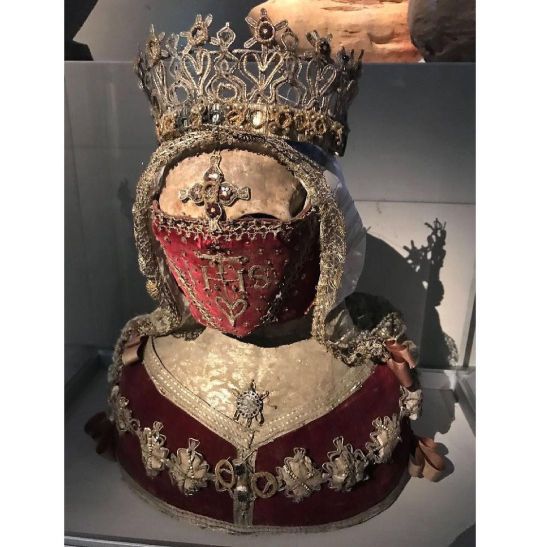
“Voglia comprenderlo la vostra carità, noi non alziamo qui un altare a Stefano, ma facciamo delle reliquie di Stefano un altare a Dio. Dio ama questi altari e, se mi chiedete perché, vi dirò che il perché è che la morte dei santi è preziosa davanti a Dio" -Sant’Agostino, Discorso CCCXVIII su Santo Stefano, V. Reliquie possono essere corpi incorrotti dei santi (conservati in sarcofagi od urne di cristallo), oppure parti del corpo del/della santo/a (custodite in reliquiari), od oggetti con cui i santi sono venuti in contatto. Suddivise in base a preziosità ed eccezionalità, è attraverso le reliquie che si possono operare miracoli, cacciare demoni e tentazioni. Non per nulla sant’Ambrogio fece costruire quattro basiliche ai quattro angoli di Milano, (fuori dalle mura romane e sopra aree cimiteriali) ciascuna delle quali conteneva reliquie di santi come protezione da nemici e forze del male. Il culto delle reliquie iniziò dai primi tempi della Chiesa, con la venerazione dei corpi dei primi martiri cristiani e la Chiesa ne espresse le ragioni teologiche nel IIConcilio di Nicea (787dc) e durante la XXV Sess. della III Fase del Concilio di Trento (1562-1564) "I fedeli devono venerare i corpi dei Martiri e degli altri Santi, che vivono con Cristo. Essi furono suoi mèmbri vivi e tempio dello Spirito Santo e risusciteranno per la vita eterna e per la gloria. Dio accorda per mezzo loro molti benefici agli uomini e perciò quelli che dicono che le reliquie dei Santi non meritano di essere venerate e sono inutilmente onorate dai fedeli, [...] sono assolutamente meritevoli di condanna e, come già da molto tempo, la Chiesa li ha condannati”, “di nuovo li condanna". Foto1: reliquiario, Chiesa del Beghinaggio di San Giovanni Battista, Lovanio, Belgio, XVII sc. Foto2: St Luciana, convento di Heiligkreuztal, Germania, XVIIISC. ©️P.Koudounaris Foto3: St.Munditia sorregge il calice con il sangue disidratato prova del suo martirio, Chiesa di St. Pietro, Monaco di Baviera.©️P.Koudounaris ✝️🛐 #reliquia #reliquie #festadellesantereliquie #chiesacattolica #cristianesimo #venerazionedeisanti #santagostino #deboramenozzi #storiadellareligione #5novembre #martiricristiani https://www.instagram.com/p/CklR-TksYTg/?igshid=NGJjMDIxMWI=
#reliquia#reliquie#festadellesantereliquie#chiesacattolica#cristianesimo#venerazionedeisanti#santagostino#deboramenozzi#storiadellareligione#5novembre#martiricristiani
0 notes
Text
Best World War II Non-fiction History Books
ABRAMSKY, C. (ed.), Essays in Honour of E. H. Carr ('The Initiation of the Negotiations Leading to the Nazi-Soviet Pact: A Historical Problem’, D. C. Watt) Macmillan, 1974
ABYZOV, VLADIMIR, The Final Assault, Novosti, Moscow, 1985
ALEXANDROV, VICTOR, The Kremlin, Nerve-Centre of Russian History, George Allen 8: Unwin, 1963
ALLILUYEVA, SVETLANA, Only One Year, Hutchinson, 1969
Twenty Letters to a Friend, Hutchinson, 1967
AMORT, R., and JEDLICKA, I. M., The Canan's File, Wingate, 1974
ANDERS, LIEUTENANT-GENERAL W., An Army in Exile, Macmillan, 1949
ANDREAS-FRIEDRICH, RUTH, Berlin Underground, 1939-1945, Latimer House, 1948
ANON, A Short History of the Bulgarian Communist Party, Sofia Press, Sofia, 1977
ANON, The Crime of Katyn, Facts and Documents, Polish Cultural Foundation, 1965
ANON, The Obersalzberg and the Third Reich, Plenk Verlag, Berchtesgaden, 1982
ANTONOV-OUSEYENKO, ANTON, The Time of Stalin, Portrait of a Tyranny, Harper & Row, New York, 1981
BACON, WALTER, Finland, Hale, 1970
BARBUSSE, HENRI, Stalin: A New World Seen Through One Man, Macmillan, New York, 1935
BAYNES, N. H. (ed), Hitler’s Speeches, 1922-39, 2 vols, OUP, 1942
BEAUFRE, ANDRE, 1940: The Fall of France, Cassell, 1968
BECK, JOSEF, Demier Rapport, La Baconniére, Brussels, 1951
BEDELL SMITH, WALTER, Moscow Mission 1946-1949, Heinemann, 1950
BELOFF, MAX, The Foreign Policy of Soviet Russia, Vol Two, 1936-1941, Oxford, 1949
BEREZHKOV, VALENTIN, History in the Making, Progress Publishers, Moscow, 1983
BIALER, S., Stalin and His Generals, Souvenir Press, 1969
BIELENBERG, CHRISTABEL, The Past is Myself, Chatto & Windus, 1968
BIRKENHEAD, LORD, Halifax, Hamish Hamilton, 1965
BOHLEN, CHARLES E., Witness to History, 1929-1969, Weidenfeld & Nicolson, 1973
BONNET, GEORGES, Fin d’une Europe, Geneva, 1948
BOURKE-WHITE, MARGARET, Shooting the Russian War, Simon 8: Schuster, New York, 1942
BOYD, CARL, Magic and the Japanese Ambassador to Berlin, Paper for Northern Great Plains History Conference, Eau Claire, Wisconsin, 1986
BUBER, MARGARETE, Under Two Dictators, Gollancz, 1949
BUBER-NEUMANN, MARGARETE, Von Potsdam nach Moskau Stationens eines Irrweges, Hohenheim, Cologne, 1981
BULLOCK, ALAN, Hitler: A Study in Tyranny, Pelican, 1962
BURCKHARDT, CARL I., Meine Danziger Mission, 1937- 1939, Munich, 1960
BUTLERJ. R. M. (editor), Grand Strategy, Vols I-III, HMSO, 1956-1964
BUTSON, T. G., The Tsar’s Lieutenant: The Soviet Marshal, Praeger, 1984
CALDWELL, ERSKINE, All Out on the Road to Smolensk, Duell, Sloan and Pearce, New York, 1942
CALIC, EDOUARD, Unmasked: Two Confidential Interviews with Hitler in 1931, Chatto & Windus, 1971
CARELL, PAUL, Hitler’s War on Russia, Harrap, 1964
CASSIDY, HENRY C., Moscow Dateline, Houghton Mifilin, Boston, 1943
CECIL, ROBERT, Hitler’s Decision to Invade Russia, 1941, Davis-Poynter, 1975
CHANEY, OTTO PRESTON, JR., Zhukov, David & Charles, Newton Abbot, 1972
CHAPMAN, GUY, Why France Collapsed, Cassell, 1968
CHURCHILL, WINSTON S., The Second World War. Vol. I: The Gathering Storm, Vol. II: Their Finest Hour, Vol. III: The Grand Alliance, Penguin, 1985
CIENCIALA, ANNA M., Poland and the Western Powers, Routledge & Kegan Paul, 1968
CLARK, ALAN, Barbarossa, Hutchinson, 1965
COATES, W. P. and Z. K., The Soviet-Finnish Campaign, Eldon Press, 1942
COHEN, STEPHEN (ed.), An End to Silence (from Roy Medvedev’s underground magazine, Political Diary), W. W. Norton, New York, 1982
COLLIER, RICHARD, 1940 The World in Flames, Hamish Hamilton, 1979
COLVILLE, JOHN, The Fringes of Power, Downing Street Diaries, 1939-1955, Hodder & Stoughton, 1985
COLVIN, IAN, The Chamberlain Cabinet, Gollancz, 1971
CONQUEST, ROBERT, The Great Terror: Stalin’s Purge of the Thirties, Macmillan, 1968
COOKE, RONALD C., and NESBIT, ROY CONGERS, Target: Hitler’s Oil, Kitnber, 1985
COOPER, DIANA, Autobiography, Michael Russell, 1979
COULONDRE, ROBERT, De Staline a Hitler, Paris, 1950
CRUIKSHANK, CHARLES, Deception in World War II, CUP, 1979
DAHLERUS, BIRGER, The Last Attempt, Hutchinson, 1948
DALADIER, EDOUARD, The Defence of France, Hutchinson, 1939
DEAKIN, F. W., and STORRY, G. R., The Case of Richard Sarge, Chatto 8: Windus, 1966
DEIGHTON, LEN, Blitzkrieg, Jonathan Cape, 1979
DELBARS, YVES, The Real Stalin, George Allen 8: Unwin, 1953
DEUTSCHER, ISAAC, Stalin. A Political Biography, CUP, 1949
DIETRICH, OTTO, The Hitler I Knew, Methuen, 1957
DILKS, DAVID, (ed.), Diaries of Sir Alexander Cadogan 1938-1945, Cassell, 1971
DJILAS, MILOVAN, Conversations with Stalin, Penguin, 1963
DOBSON, CHRISTOPHER and MILLER, JOHN, The Day We Almost Bombed Moscow: Allied War in Russia 1918-1920, Hodder & Stoughton, 1986
DOLLMANN, EUGEN, The Interpreter, Hutchinson, 1967
DONNELLY, DESMOND, Struggle for the World, Collins, 1965
DOUGLAS, CLARK, Three Days to Catastrophe, Hammond, 1966
DRAX, ADMIRAL SIR REGINALD PLUNKETT-ERNLE-ERLE-, Mission to Moscow, August 1939, Privately, 1966
DREA, EDWARD J., Nomohan: Japanese-Soviet Tactical Combat. 1939, Combat Studies Institute, Leavenworth Papers, January 1981
EDEN, ANTHONY, Facing the Dictators, Cassell, 1962
The Reckoning, Cassell, 1965
EDMONDS, H.J., Norman Dewhurst, MC, Privately, Brussels, 1968
EHRENBURG, ILYA, Eve of War, MacGibbon & Kee, 1963
EINZIG, PAUL, In the Centre of Things, Hutchinson, 1960
EISENSTEIN, SERGEI M., Immoral Memories, Peter Owen, 1985
ENGEL, GERHARD, Heeresadjutant bei Hitler 1938-1943, Deutsche Verlags-Anstalt,
Stuttgart, 1974
ERICKSON,J., The Road to Stalingrad Weidenfeld & Nicolson, 1975
The Soviet High Command, Macmillan, 1962 ‘Reflections on Securing the Soviet Far Eastern Frontier: 1932-1945’, Interplay, August-September 1969
EUGLE, E., and PAANEN, L., The Winter War, Sidgwick 8: Jackson, 1973
FEILING, KEITH, The Life of Neville Chamberlain, Macmillan, 1946 FESTJOACHIM C., Hitler, Harcourt Brace Jovanovich, New York, 1974
The Face of the Third Reich, Weidenfeld 8c Nicolson, 1970
FISCHER, ERNST, An Opposing Man, Allen Lane, 1974
FLANNERY, HARRY W., Assignment to Berlin, Michael Joseph, 1942
FLEISHER, WILFRID, Volcano Isle, Jonathan Cape, 1942
FOOTE, ALEXANDER, Handbook for Spies, Museum Press, 1949, 1953
FRANCOIS-PONCET, ANDRE, The Fateful Years, Gollancz, 1949
FRANKEL, ANDREW, The Eagle’s Nest, Plenk Verlag, Berchtesgaden, 1983
GAFENCU, GRIGOIRE, The Last Days of Europe, Frederick Muller, 1947
GALANTE, PIERRE, Hitler Lives and the Generals Die, Sidgwick 8: Jackson, 1982
GARLINSKI, JOZEF, The Swiss Corridor, J. M. Dent, 1981
GIBSON, HUGH (ed.), The Ciano Diaries, 1939-1 943, Doubleday, New York, 1946
GILBERT, MARTIN, Finest Hour, Heinemann, 1983
The Holocaust, TheJewish Tragedy, Collins, 1986
Winston Churchill, The Wildemess Years, Macmillan, 1981
GISEVIUS, HANS BERND, To the Bitter End, Cape, 1948
GORALSKI, ROBERT, World War II Almanac, 1931-1945, Hamish Hamilton, 1981
GORBATOV, ALEKSANDR v., Years Of My Lips, Constable, 1964
GORODETSKY, G., Stahhrd Cripps’Mission to Moscow, 1940-42, Cambridge U.P., 1984
GREW, JOSEPH C., Ten Years in Japan, Hammond, Hammond, 1945
GREY, IAN, Stalin, Man of History, Weidenfeld 8c Nicolson, 1979
The First Fijiy Years. Soviet Russia, 1917-1967, Hodder 8c Stoughton, 1967
GRIGORENKO, PETRO G., Memoirs, Harvill, 1983 GRIPENBERG, G. A. (trs. Albin T. Anderson), Finland and the Great Powers, Univ. Of
Nebraska Press, Lincoln, 1965
GUDERIAN, HEINZ, Panzer Leader, Ballantine Books, New York
GUN, NERIN E., Eva Braun, Hitler’s Mistress, Frewin, 1968
HALDER, COLONEL-GENERAL FRANZ, Kriegstagehuch, Kohlhammer, Stuttgart, 1963 Hitler als Feldherr, Miinchener Dom-Verlag, Munich, 1949
HALIFAX, LORD, Fulness of Days, Collins, 1957
HARLEYJ. H. (based on Polish by Conrad Wrzos), TheAuthentic Biography of Colonel Beck, Hutchinson, 1939
HARRIMAN, W. A., and ABEL, 13., Special Envoy to Churchill and Stalin, 1941-1946, Random House, New York, 1975
HASLAM,J., The Soviet Union and the Struggle/or Collective Security in Europe, 1933-1939, Macmillan, 1984
HAUNER, MILAN, Hitler. A Chronology of His Life and Time, Macmillan, 1983
HAYASHI, SABURO (with ALVIN D. coox), Kogun, The ]apanese Army in the Pacific War, Marine Corps Association, Quantico, Va., 1959
HEIBER, HELMUT, Goebbels, Robert Hale, 1972
HENDERSON, SIR NEVILE, Failure of a Mission, Hodder & Stoughton, 1940
HERWARTH, HANS VON (with FREDERICH STARR), Against Two Evils, Collins, 1981
HESSE, FRITZ, Das Spiel um Deutschland, List, Munich, 1953 Hitler and the English, Wingate, 1954
HESTON, LEONARD and RENATO, The Medical Case Boole of Adolf Hitler, Kimber, 1979
HILGER, GUSTAV (with ALFRED G. MEYER), The Incompatible Allies: A Memoir-History of German-Soviet Relations, 1918-1941 Macmillan, New York, 1953
HILL, LEONIDAS E. (ed.) Die Weizsacleer Papiere, 1933-1950, Berlin, 1974
HINSLEY, F. H. with THOMAS, E. E., RANSOM, C. F. G., and KNIGHT, R. (3., British Intelligence in the Second World War, Vol. 1, HMSO, 1979
HITLER, ADOLF, Mein Kampf, Hutchinson, 1969 Hitler’s Secret Conversations, Signet, New York, 1961 The Testament of Adolf Hitler. The Hitler-Borrnann Documents, Cassell, 1961
HOFFMANN, HEINRICH, Hitler Was My Friend, Burke, 1955
HOFFMANN, PETER, Hitler’s Personal Security, MIT, Boston, 1979
HOHNE, HEINZ (trs. R. Barry), The Order of the Death ’5 Head: The Story of Hitler’s SS, Seeker & Warburg, 1969 HOSKING, G., A History of the Soviet Union, Fontana, 1985 HYDE, H. MONTGOMERY, Stalin, Rupert Hart-Davis, 1971 INFIELD, GLENN B., Hitler’s Secret Life, Hamlyn, 1980 IRVING, DAVID, Hitler’s War, 1939-1942, Macmillan, 1983 The War Path, Michael Joseph, 1978
ISRAELYAN, V. L., The Diplomatic History of the Great Fatherland War, Moscow, 1959
JAKOBSON, MAX, The Diplomacy of the Winter War, Harvard UP, Boston, 1961
JEDRZEJEWICZ, WACLAW (ed.), Diplomat in Paris: 1931-1939 -Papers 65 Memoirs of ]uliusz Lukasiewicz, Columbia UP, New York, 1970
JONES, F. C., Japan’s New Order in East Asia. Its Rise and Fall, 0UP, 1954 Manchuria Since 1931, Royal Institute of International Affairs, 1949
JONES, R. V., Most Secret War, Hamish Hamilton, 1978
JONGE, ALEX DE, Stalin and the Shaping of the Soviet Union, Collins, 1986 The Weimar Chronicle. Prelude to Hitler, Paddington Press, 1978
KAZAKOV, GENERAL M. I., Nad Kartoi Bylykh Srazhenii, Voenizdat, Moscow, 1965
KEITEL, WILHELM, Memoirs, Kimber, 1965
KENNAN, GEORGE E, Soviet Foreign Policy 1917-1941, Robert E. Krieger, Princeton, 1960
KHRUSHCHEV, NIKITA S., (Trs. and edited by Strobe Talbott), Khrushchev Remembers, André Deutsch, 1971
KIRBY, D. G., Finland in the Twentieth Century, C. Hurst 8t Co., 1979
KIRKPATRICK, LYMAN B. JR, Captains Without Eyes. Intelligence Failures in World War II, Macmillan, New York
KLEIST, PETER, European Tragedy, Times Press/Anthony Gibbs & Phillips, Isle of Man, 1965
KORDT, ERICH, Nicht aus den Akten: Die Wilhelrnstrasse in Frieden und Krieg, Stuttgart, 1950
KRAVCHENKO, VICTOR, I Chose Freedom, Robert Hale, 1947
KROSBY, HANS PETER, Finland, Germany and the Soviet Union, 1940-41: The Petsamo Dispute, Univ. of Wisconsin, Madison, 1968
KRYLOV, IVAN, Soviet Staff Officer, Falcon Press, 1951
KUBIZEK, AUGUST, The Young Hitler I Knew, Houghton, Mifflin, Boston, 1955
KUSNIERZ, B. N., Stalin and the Poles, Hollis & Carter, 1949
KUUSINEN, AINO, Before and After Stalin, Michael Joseph, 1974
KUZNETSOV, N. G., ‘In Charge of the Navy’ (from Stalin and His Generals, ed. Seweryn Bialer), Souvenir Press, 1969
LEACH, BARRY A., German Strategy Against Russia, 1939 - 1941, OUP, 1973
LEHMAN, JEAN-PIERRE, The Roots of Modern Japan, Macmillan, 1982
LENSEN, GEORGE ALEXANDER, The Strange Neutrality. Soviet-Japanese Relations During the Second World War 1941-1945, Diplomatic Press, Tallahassee, Fla., 1972
LEONHARD, WOLFGANG, Child of the Revolution, Collins, 1957
LEWIN, RONALD, Hitler’s Mistakes, Leo Cooper, 1984 Ultra Goes to War, Hutchinson, 1978
LITVINOV, MAXIM, Notes for a Journal, André Deutsch, 1955
LITYNSKI, ZYGMUNT, I Was One of Them, Cape, 1941
LOSSBERG, BERNHARD VON, Im Wehnnachtfuhrungsstab, Nolke, Hamburg, 1947
LUKACS JOHN, The Last European War, Routledge & Kegan Paul, 1977
LYONS, GRAHAM (ed.), The Russian Version of the Second World War, Leo Cooper, 1976
MACKENZIE, A., The History of Transylvania, Unified Printers 8: Publishers, 1983
MACKIEWICZ, STANISLAW, Colonel Beck and His Polity, Eyre & Spottiswoode, 1944
MACKINTOSH, M., Juggernaut. A History of the Soviet Armed Forces, Seeker 8t Warburg, 1967
MACLEAN, FlTZROY, Eastern Approaches, Cape, 1949
MACLEOD, COLONEL R., and KELLY, DENIS (eds.), The Ironside Diaries, 1937-1940, Constable, 1962
MAISKY, IVAN, Memoirs of a Soviet Ambassador, Hutchinson, 1967 Who Helped Hitler?, Hutchinson, 1964
MANCHESTER, WILLIAM, The Arms of Krupp, Michael Joseph, 1969
MANVELL, ROGER, and FRAENKEL, HEINRICH, Hitler, the Man and the Myth, Granada, 1978
MEDVEDEV, ROY, All Stalin 3 Men, Blackwell, Oxford, 1983 Let History Judge, Alfred A. Knopf, New York, 1971 Khrushchev, Blackwell, Oxford, 1982 On Stalin and Stalinism, CUP, 1979
MERSON, ALLAN, Communist Resistance in Nazi Germany, Lawrence & Wishart, 1985
MORAVEC, FRANTISEK, Master of Spies, Bodley Head, 1975
MORLEY, JAMES W. (ed.), The Fateful Choice: Japan ’s Road to the Pacific War, Columbia UP, New York, 1980
MOSLEY, LEONARD, On Borrowed Time, Weidenfeld & Nicolson, 1969
NEKRICH, A. M., 1941, 22 Iyunia, Nauka, Moscow, 1965
NOLLAU, GUNTHER, International Communism and World Revolution, Hollis & Carter, 1961
NOWAK, JAN, Courier from Warsaw, Collins/Hamill, 1982
OTETEA, ANDREI, The History of the Romanian People, Scientific Publishing House, Bucharest, 1970
OVSYANY, IGOR, The Origins of Word War Two, Novosti, Moscow, 1984
PAASIKIVI, JUHO KUSTI, Am Rande einer Supermacht, Behauptung durch Diplomatie, Hosten Verlag, Hamburg, 1966
PARKINSON, ROGER, Peace for Our Time, Hart-Davis, 1971
PAYNE, ROBERT, The Rise and Fall of Stalin, W. H. Allen, 1966
PETROV, VLADIMIR, June 22, 1941. Soviet Historians and the German Invasion, Univ. of S. Carolina, 1968
RACZYNSKI, COUNT EDWARD, In Allied London, Weidenfeld & Nicolson, 1962
RADO, SANDOR, Sous le Pseudonym Dora (Dora Jelenti), Julliard, Paris, 1972
RAEDER, ERICH, My Life, US Naval Institute, Annapolis, 1960
READ, ANTHONY, and FISHER, DAVID, Colonel Z, Hodder & Stoughton, 1984 Operation Lucy, Hodder & Stoughton, 1980
REISCHAUER, EDWIN O., The Japanese, Harvard UP, 1977
REITLINGER, GERALD, The House Built on Sand, Weidenfeld & Nicolson, 1960
RIBBENTROP, JOACHIM VON, Zwischen London und Moskau: Erinnerungen und letzte Aufzeichnungen, Stuttgart, 1955
RICH, NORMAN, Hitler’s War Aims: Ideology, the Nazi State and the Course of Expansion, Norton, New York, 1973 Hitler’s War Aims: The Establishment of the New Order, Norton, New York, 1974
RINGS, WERNER, Life with the Enemy, Weidenfeld & Nicolson, 1982
ROKOSSOVSKY, K., A Soldier’s Duty, Progress Publishers, Moscow, 1970
ROOS, H., A History of Modern Poland, Eyre & Spottiswoode, 1962
ROSSI, A., The Russo-German Alliance, Chapman 8: Hall, 1950
ROTHSTEIN, ANDREW, and DUTT, CLEMENS (eds.), History of the Communist Party of the Soviet Union, Foreign Languages Publishing House, Moscow
RUBINSTEIN, ALVIN Z. (ed.), The Foreign Policy of the Soviet Union. The Search for Security 1934-41, New York, undated
RUSSELL, WILLIAM, Berlin Embassy, Michael Joseph, 1942
RYABOV, VASILI, The Great Victory, Novosti, Moscow, 1985
SALISBURY, HARRISON E., A journey for Our Times, Harper 81. Row, New York, 1983 The Siege of Leningrad, Seeker & Warburg, 1969
SCHAPIRO, LEONARD, The Government and Politics of the Soviet Union, Vintage Books, 1978
SCHMIDT, PAUL, Hitler’s Interpreter, Heinemann, 1951 SCHRAMM, PERCY ERNST, Hitler: The Man and the Military Leader, Allen Lane, 1972 SCHREIBER, H., Teuton and Slav, 1965
SCHWARZ, PAUL, This Man Ribhentrop, julian Messner, New York, 1943
SCOTT, JOHN, Duel for Europe, Houghton Mifflin, Boston, 1942
SEATON, ALBERT, The Russo-German War 1941-45, Arthur Barker, 1971 Stalin as Warlord, Batsford, 1976
SEVOSTYANOV, PAVEL, Before the Nazi Invasion, Progress, Moscow, 1984
SEYMOUR, CHARLES (ed.), The Intimate Paper of Colonel House, Houghton Mifflin, Boston, 1926
SHACHTMAN, TOM, The Phony War 1939-1940, Harper & Row, New York, 1982
SHIRER, WILLIAM, Berlin Diary, Bonanza Books, New York, 1984 The Nightmare Years, 1930-1940, Little, Brown, ‘Boston, 1984 The Rise and Fall of the Third Reich, Secker & Warburg, 1960 The Collapse of the Third Republic, Literary Guild, 1966
SHOSTAKOVICH, DMITRI, Testimony, Hamish Hamilton, 1979
SIPOLS, V. J., Secret Diplomacy. Bourgeois Latvia in the Anti-Soviet Plans of the Imperialist Powers, 1919-1940, Riga The Road to Victory, Progress, Moscow, 1985
SMITH, HOWARD K., Last Train from Berlin, Cresset Press, 1942
SOMMER, ERICH F., Das Memorandum, Herbig, Munich, 1981
SOUVARINE, BORIS, Stalin-A Critical Survey of Bolshevism, Longmans, Green, New York, 1939
SPEER, ALBERT, Inside the Third Reich, Weidenfeld & Nicolson, 1970
STALIN, J. V., The Great Patriotic War of the Soviet Union, International Publishers, New York, 1948
STERN, J. P., Hitler. The Fuhrer and the People, Fontana, 1975
STONE, NORMAN, Hitler, Hodder & Stoughton, 1980
STORRY, RICHARD, A History of Modern Japan, Penguin Books, 1960 Japan and the Decline of the West in Asia 1894-1943, Macmillan, 1979
STRANG, LORD, The Moscow Negotiations 1939, Leeds UP, 1968 Home and Abroad, André Deutsch, 1956
STYPULKOWSKI, Z., Invitation to Moscow, Thames & Hudson, 1951
SUKHANOV, N. N., The Russian Revolution, 1917, CUP, 1955
SUVOROV, VIKTOR, Soviet Military Intelligence, Hamish Hamilton, 1984
SYROP, KONRAD, Poland in Perspective, Robert Hale, 1982
SZEMBEK, JAN, Journal, 1933-1939, Léon Noel, Paris, 1952
TANNER, V., The Winter War, Stanford UP, 1957
TARULIS, ALBERT N., Soviet Policy Toward the Baltic States, 1918-1944, Univ. of Notre Dame Press, 1959
TAYLOR, A.J. P., The Origins of the Second World War, Penguin, 1961 The Second World War, Hamish Hamilton, 1975
TAYLOR, FRED (ed.), The Goebbels Diaries 1939-41, Hamish Hamilton, 1982
THAYER, CHARLES, Diplomat, Harper, New York, 1959
THOMI, ABRAHAM, The Dream and the Awakening, Gareth Powell Associates, Sydney, 1977
TOKAEV, G., Comrade X, Harris Press, 1956
TOLAND, JOHN, Adolf Hitler, Doubleday, New York, 1976
The Rising Sun. The Decline and Fall of the Japanese Empire, 1936-1945, Cassell, 1970
TROTSKY, LEON, My Life, Grosset & Dunlap, New York, 1960
Stalin: An Appraisal of the Man and his Influence, Harper, New York, 1941
TUOMINEN, ARVO, The Bells of the Kremlin, Univ. Press of New England, 1983
ULAM, ADAM B., Expansion and Coexistence. Soviet Foreign Policy, 1917-73, Praeger Publishers, New York, 1974
Stalin, the Man and his Era, Allen Lane, 1974
UPTON, A. F., Finland 1939-40, Davis-Poynter, 1974
Finland in Crisis, 1940-1941, Faber & Faber, 1964
The Communist Parties of Scandinavia and Finland, Weidenfeld & Nicolson, 1973
URBAN, GARRI S., Tovarisch, I am not Dead, Weidenfeld & Nicolson, 1980
VANSITTART, LORD, The Mist Procession, Hutchinson, 1958
VARDYS, V. STANLEY (ed.), Lithuania Under the Soviets 1940-1965: Aggression Soviet Style 1939-1940, Frederick Praeger, New York, 1965
VIGOR, P. H., Soviet Blitzkrieg Theory, Macmillan, 1983
VOLKOV, FYDOR, Secrets from Whitehall and Downing Street, Progress Publishers, Moscow, 1980
VORMANN, NIKOLAUS VON, Der Feldzug in Polen, I93 9, Weissenburg, 1958
VORONOV, N. N., Na Sluzhbe Voennoi, Moscow, 1963
WALLER, BRUCE, Bismarck at the Crossroads, Athlone Press, 1974
WARLIMONT, WALTER, Inside Hitler’s Headquarters, 1939-45, Weidenfeld & Nicolson, 1964
WATT, DONALD CAMERON, Too Serious a Business, Temple Smith, 1975
WATTS, RICHARD M., Bitter Glory: Poland and its Fate, 1918 to I 939, Simon & Schuster, New York, 1979
WEINBERG, GERHARD L., World in the Balance, Univ. of New England, 1981
WEIzsACKER, ERNST VON, Memoirs, Gollancz, 1951
WELAND, JAMES EDWIN, Thejapanese Army in Manchuria, Ann Arbor, Michigan. Dissertation, University of Arizona, 1977
WELLES, SUMNER, A Time for Decision, Harper, New York, 1944
WERTH, ALEXANDER, Russia at War, E. P. Dutton, New York, 1964
WHALEY, BARTON, Codeword Barbarossa, MIT, Boston, 1974
WHEATLEY, RONALD, Operation Sea Lion, CUP, 1958
WHEELER-BENNETT, JOHN W., The Nemesis of Power: The German Army in Politics, 1914 - 1945, Macmillan, 1953
WISKEMANN, ELIZABETH, Europe of the Dictators 1919-1945, Fontana, 1966
WOODWARD, LLEWELLYN, British Foreign Policy in the Second World War, HMSO, 1962
WUORINEN, JOHN H, A History of Finland, Columbia, New York, 1965
YAKOVLEV, A., Purpose of My Life. Notes of an Aircraft Designer. Progress, Moscow, 1974
YEREMENKO, MARSHAL G. K., Vospominaniya i Razmyshleniya, Novosti, Moscow, 1970
YOUNG, KATSU, Thejapanese Army and the Soviet Union 1 93 9-1 941 , Univ. of Washington, 1958
ZARIK, 0., German Odyssey, London, 1941
ZHUKOV, GEORGI I., Memoirs, Cape, 1970 . ZOLLER, ALBERT, Douze ans auprés d’Hz‘tler (Memoirs of Christa Schrc'idcr), Julhard, Paris, 1949 .
ZUKER-BUJANOWSKA, LILIANA, Liliana ’s Journal, Warsaw 1939-1945, Piatkus, 1981
9 notes
·
View notes
